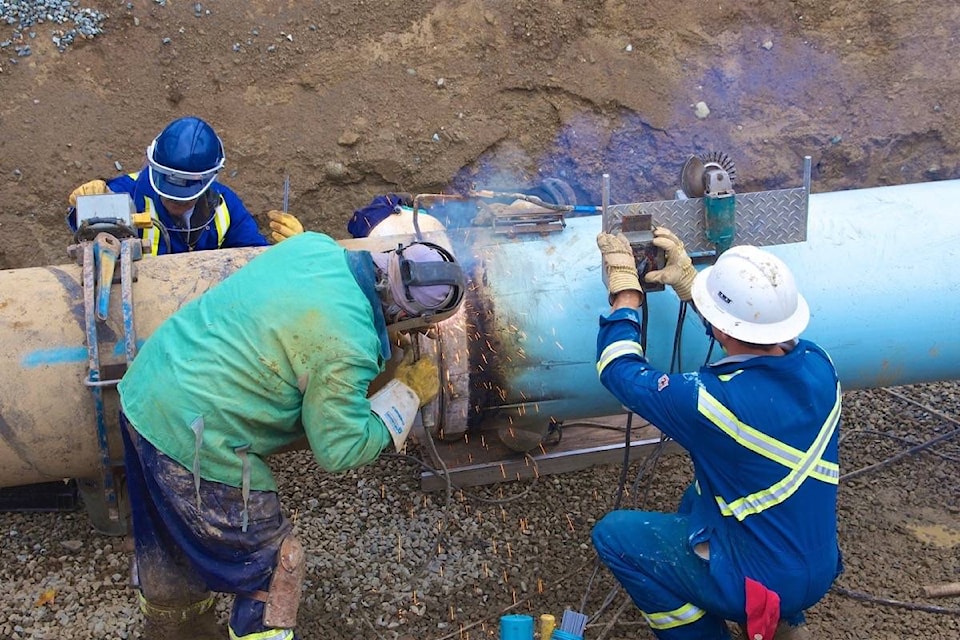Premier John Horgan aims to put an end to B.C.91ôÐêáòÆóçs long-running experiment in delivery of trade apprenticeship training, ordering the labour and advanced education ministers to 91ôÐêáòÆóçrestore the compulsory trades system91ôÐêáòÆóç during the NDP government91ôÐêáòÆóçs four-year mandate.
Horgan91ôÐêáòÆóçs objective is the same as his often-stated goal for union-only public construction: to increase the number of apprentices and especially those who go on to complete their trade tickets. Both efforts are backed by the B.C. and Yukon Building Trades Council and the B.C. Federation of Labour, which called for a return to compulsory trades training when Horgan91ôÐêáòÆóçs NDP government was elected in 2017.
With a majority mandate, stage one is to expand public construction projects that are restricted to 19 mostly U.S.-based international unions. The Pattullo bridge replacement serves as the model for a deal that requires every worker to join an approved union within 30 days. The 330-page 91ôÐêáòÆóçCommunity Benefits Agreement91ôÐêáòÆóç (CBA) with the unions requires 25 per cent of jobs for apprentices and attempts to restrict hiring to people who live within 100 km of the project.
Stage two is to remake the , the Crown corporation set up in 2003 by Gordon Campbell91ôÐêáòÆóçs B.C. Liberal government to manage apprenticeships and provide more accessible training for in-demand skills.
RELATED:
RELATED:
Horgan91ôÐêáòÆóçs new to returning Labour Minister Harry Bains and newly appointed Advanced Education Minister Ann Kang say compulsory trades are 91ôÐêáòÆóçto improve safety and give more workers a path to apprenticeship completion.91ôÐêáòÆóç Critics point out that the vast majority of traditional trades work now is with non-union employers and those with more flexible workplaces.
91ôÐêáòÆóçGiven that fully 85 per cent of the nearly 250,000 men and women who work in construction in B.C. work for open-shop (non-building trades) companies, the government must ensure there is a level playing field when it comes to issuing contracts for taxpayer-funded infrastructure,91ôÐêáòÆóç says Chris Gardner, president of the Independent Contractors and Business Association. 91ôÐêáòÆóçGiving preferential status to selected unions is simply not fair, and the record on the projects tendered to date under CBAs is abundantly clear. Taxpayers are paying about 30 per cent more and getting less.91ôÐêáòÆóç
In a 2017 , the B.C. Federation of Labour argued that B.C.91ôÐêáòÆóçs industry training system is unlike any other province. The report described it as the 91ôÐêáòÆóçmodularization of trades training: instead of covering the full scope of a large, varied trade like carpentry, an individual could acquire certification as a former, framer, and finishing carpenter through a series of progressive credentials91ôÐêáòÆóç or modules.
The B.C. Fed argues this deregulation shifted apprenticeships in favour of employers and their immediate skill needs, and it wants authority over apprenticeships shifted back to its member unions. Gardner91ôÐêáòÆóçs the B.C. Building Trades91ôÐêáòÆóç apprenticeships represent only 15 per cent of the total, and compulsory trades are a further restriction on new entry.
The Industry Training Authority91ôÐêáòÆóçs efforts at innovation include a series of pilot projects launched at post-secondary institutions in 2016, not dependent on apprenticeships with employer sponsors. They included 75 spaces at North Island College for 91ôÐêáòÆóçfoundation programs: electrician, heavy equipment operator, welder, aircraft structural technician and carpenter.91ôÐêáòÆóç
Camosun College was funded for two programs, 10 training spaces for piping trades and eight for level three professional cooks. Okanagan College received seven spaces for level one electrician training, and Vancouver Community College was accepted for six automotive glass technician spots. Vancouver Island University received 12 spaces for level one baker training.
tfletcher@blackpress.ca
Like us on and follow us on .



